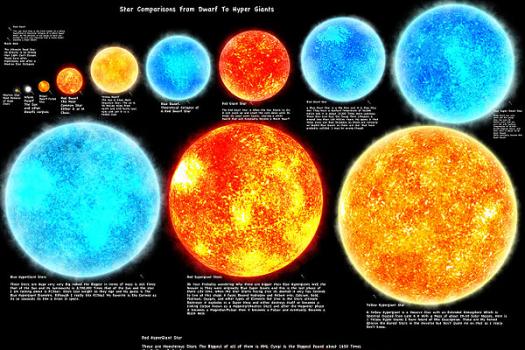Sizes of Stars
- Lesson Plan
- Video
- Feedback Form
Karl Garnham
Description:
How big is our star? How does it compare to other stars in the universe? How enormous can stars be? In this activity students use math and imagination to construct a scaled model of stellar sizes.
Time:
45-60 minutes
Grade Level:
5, Middle School (6-8)
Next Generation Science Standards:
Utah Core Standards:
6.1.3
Students will understand the relationship and attributes of objects in the solar system.
Materials
- A metric ruler for every student or small group of students
- Star Classes Table for every student or group
- Objects that can be used to represent stars and the Earth:
- Cherry tomato or small red ball such as a paddle ball (3 cm or about 1 inch in diameter)
- Orange
- Large grapefruit or yellow ball (14 cm or about 5 inches in diameter)
- Cantaloupe
- Volleyball
- Large blue play ball or balloon (diameter of about 43 cm or 17 inches)
- Blue candy sprinkle (to represent Earth)
Instructions
- Review the concept of scale factors with students. Gather all materials and review teacher background information on main sequence stars (if you choose to go beyond the scale model activity).
- You will want to split your classroom into small groups for the activity.
Follow the Star Sizes directions. Download is below.
| Attachment | Size |
|---|---|
| 337.74 KB | |
| 76.97 KB | |
| 77.9 KB |
A good summary video to show after doing the Star Sizes activity.

